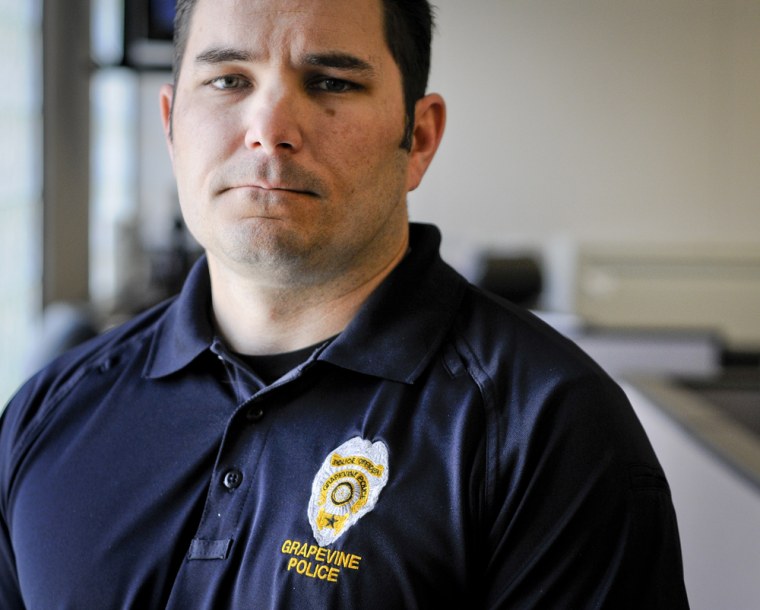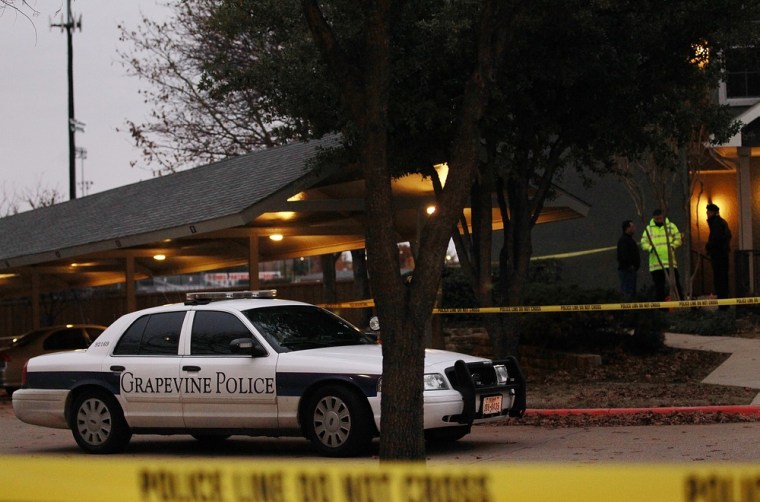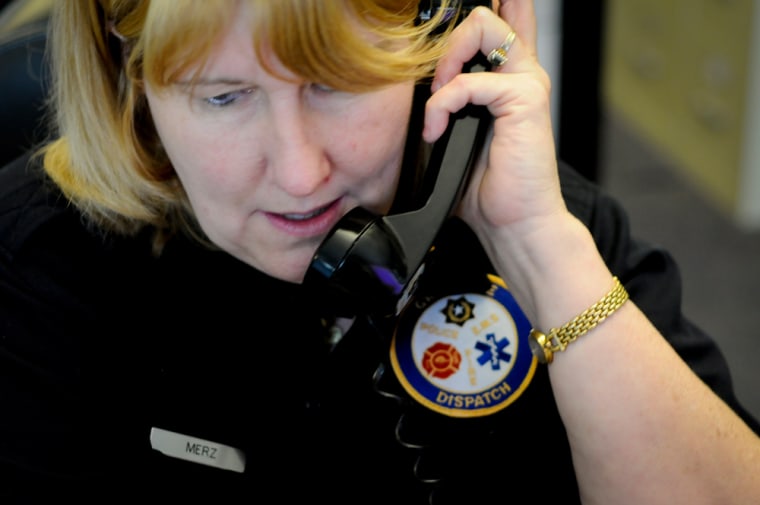Four and a half hours into her shift, at 11:34 a.m. on Christmas Day, an emergency dispatcher in the suburbs took another call.
“Grapevine 911, where is your emergency?” she asked.
Static came back.
“Hello, Grapevine 911?” the dispatcher said.
The caller responded with two deep breaths. Days later, using audio software to scrutinize a recording of the call, investigators would find hints of the horror unfolding on the other end of the line. But at the moment, the dispatcher faced the signature predicament of her corner of law enforcement: an open line.
“Afterwards, when you realize, ‘I was listening to something horrific and I couldn’t do anything,’ that’s when the emotions kick in,” said Gary Allen, a retired dispatcher who worked for 20 years in Berkeley, Calif. “When you find out what you were in the middle of over the phone.”
Open-line calls have long plagued emergency dispatchers, who handle about 240 million calls in more than 6,000 communications centers across the country, according to Trey Forgety, government affairs director for the National Emergency Number Association, a trade group.
The advent of cellular technology has only expanded the potential for confusion. To those on the receiving end of the line, the silence can signify a prank, a pocket-dial or, just as easily, something haunting.
'A female screaming'
Even in the land-line age, open-line calls provided a singular vexation. On New Year’s Day in 1989, Sharyn Gilbert, a dispatcher for the Los Angeles Police Department, handled a 3:58 a.m. call from the home of O. J. Simpson. Six years later, she became the opening witness at his murder trial, called by prosecutors to establish a history of violent behavior.
“O.K. So the call came to you, right?” asked an assistant district attorney, Christopher Darden, according to a transcript.
“Right,” Ms. Gilbert said. “It was an open line.”
“O.K. Could you hear anything over the open line?” Mr. Darden asked.
“No,” Ms. Gilbert answered. “At the beginning, no.”
After a period of silence, Ms. Gilbert testified, she eventually heard “a female screaming, and that’s when I went back and changed my incident type from ‘unknown trouble’ to ‘a screaming woman.’ ”
Then, Ms. Gilbert testified, “I heard someone being hit.”
On cross-examination, the defense lawyer Johnnie L. Cochran Jr. challenged her claim.
“You hadn’t talked to anybody, so you don’t know what was taking place at that location, do you?” Mr. Cochran asked.
“No, I do not,” Ms. Gilbert said.
“You have no way of knowing that, do you?”
Ms. Gilbert said, “Only what I heard.”
Modern dispatchers work under banks of video screens, answering calls with a mouse click, speaking into headsets and monitoring digital mapping programs. About 70 percent of their calls come from cellular phones, which tend to provide only a vague indication of the caller’s whereabouts, according to the Federal Communications Commission.
“Cellular changed everything enormously,” Mr. Allen said. “You didn’t have any idea where it was coming from. People could sit on the phones and dial accidentally. There were a lot of misunderstanding calls, finding out a day later that there was an emergency out there. Even if you heard something on the phone, you didn’t know where to go.”
Child given timeout
Across the country, policies on open-line calls vary, depending on the size and resources of the city. Some require dispatchers to investigate every call, reaching out to cellphone service providers for more information if necessary. The results can be unpredictable. In 2004, the New Jersey Supreme Court ruled that an open-line call had not provided proper grounds for a search that turned up marijuana plants, grow lights and an elaborate watering system.
Faced with the uncertainty of an open line, dispatchers sometimes send officers into comically innocuous settings, some of which make the local newspapers. In 2008, when a dispatcher in Shrewsbury, Mass., heard a child screaming in the background, the responding officer reported that an “8-year-old child was given a timeout and called 911.” And last winter, a dispatcher in Glenburn, Me., sent a deputy to an empty house, where a pug named Lucy was found chewing on the phone that had dialed 911.
“Listening is really the name of the game,” Mr. Allen said. “Listen, interpret and judge against the agency’s policy. Most of the time it works out. Sometimes it doesn’t.”
On Christmas Day in Grapevine, the dispatcher was sitting at one of five workstations in a 700-square-foot communications center, according to Sgt. Robert Eberling of the Police Department.

The call came from a land line. On her screen, she could see the location: Unit 1111 of a gated apartment complex called Lincoln Vineyards. She could hear the caller exhaling heavily into the phone.
“It’s not uncommon for us to get a hang-up call or an open-line call where you can’t hear what’s going on,” Sergeant Eberling said. “A lot of the time, it’s just children playing on the phone.”
For the next 20 seconds, the dispatcher tried to get a response.
“You need help?” she asked.
A muffled phrase
More panting came back.
“Are you sick?” she asked.
The next response, played back later, sounded something like a muffled phrase, “shooting people.”
The dispatcher asked: “What was that?”

More deep breathing.
“Do you need an ambulance or police?” the dispatcher asked.
Ten seconds later, the dispatcher told a colleague, “I’m just getting heavy breathing on the phone,” and concluded, “So please send both.”
Inside the apartment, the police said, a 56-year-old man dressed as Santa Claus had shot and killed six relatives, including his estranged wife and their son and daughter, as they finished opening gifts.
Next to the body of the suspected gunman, Aziz Yazdanpanah, investigators found a cordless telephone.
In a written statement to reporters about the results of using audio software to scrutinize the 911 call, Lt. Todd Dearing said: “On the recording, we discovered that the caller, whom we believe to be Aziz, additionally saying, ‘I am shooting people,’ after he said, ‘Help. ... Help.’ The newly discovered audio was not heard on the original audio software over many playbacks, and was not heard/understood by the dispatcher who took the call on Sunday.”
But even amid the uncertainty on Christmas morning, as the 911 call was ending, the dispatcher warned firefighters to let the police approach the door first.
“At that point,” Sergeant Eberling said, “they didn’t know what kind of call they were dealing with.”
This article, headlined "What Happens When a 911 Emergency Call Goes Silent?" first appeared in The New York Times.
